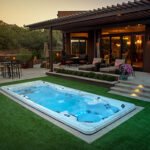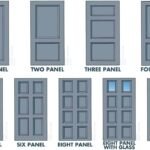Alternatives to Lattice Work: Top Deck & Porch Skirting Ideas

When it comes to enhancing the aesthetic appeal and maintaining the structural integrity of decks and porches, skirting is an essential component that cannot be overlooked. Traditionally, lattice work has been the go-to option for many homeowners due to its classic look and affordability. However, lattice work can sometimes appear outdated or fail to match the modern aesthetic of newer homes. Fortunately, there are numerous alternatives to lattice work that not only serve the functional purpose of hiding the unsightly areas beneath your deck or porch but also add a touch of elegance and uniqueness to your outdoor space. In this article, we will explore some of the top deck and porch skirting ideas that stand as alternatives to lattice work, offering both aesthetic appeal and durability.
Skirt with Modern Wood Slats
One of the most visually appealing alternatives to lattice work is the use of modern wood slats. This option involves installing horizontal or vertical wood slats around the base of your deck or porch, creating a sleek and contemporary look. The gaps between the slats can be adjusted according to your preference, allowing for customizable ventilation and visibility. Modern wood slats are not only aesthetically pleasing but also provide a sturdy barrier that can withstand the elements. When choosing this option, it's important to select weather-resistant wood such as cedar, redwood, or pressure-treated pine to ensure longevity and minimal maintenance.
Galvanized Metal Skirting
For those seeking a more industrial or rustic aesthetic, galvanized metal skirting presents a durable and visually striking alternative to lattice work. This type of skirting involves using sheets of galvanized metal, which are resistant to rust and corrosion, to enclose the area beneath your deck or porch. The metal can be left in its natural state for a rugged look or painted to match the color scheme of your home. Galvanized metal skirting not only adds an interesting visual element to your outdoor space but also provides excellent protection against pests and rodents.
Faux Stone and Brick Skirting
If you're looking to add a touch of elegance and sophistication to your deck or porch, faux stone and brick skirting are fantastic alternatives to lattice work. These materials mimic the appearance of real stone and brick but are made from lightweight and durable polyurethane or vinyl. Faux stone and brick panels are easy to install and come in a variety of colors and textures, allowing you to create a custom look that complements your home's exterior. This type of skirting not only enhances the visual appeal of your outdoor space but also provides an additional layer of insulation.
Cedar Skirting
Cedar skirting is a natural and environmentally friendly alternative to lattice work that offers both beauty and durability. Cedar wood is known for its natural resistance to rot, decay, and insect infestations, making it an ideal material for outdoor applications. When used as skirting, cedar can be stained or left natural to age gracefully over time, developing a beautiful silver-gray patina. Cedar skirting adds a warm and rustic charm to your deck or porch, creating a cozy and inviting outdoor living space.
Decorative Metal Panels Skirting
Decorative metal panels offer a unique and modern alternative to lattice work, providing an artistic touch to your deck or porch skirting. These panels come in a wide range of designs, from geometric patterns to nature-inspired motifs, allowing you to express your personal style. Made from durable materials such as aluminum or steel, decorative metal panels are resistant to rust and can be powder-coated in various colors to match your home's exterior. This type of skirting not only serves as a visual barrier but also allows for airflow and light penetration, making it both functional and stylish.
Outdoor Decorative Polypropylene Panels
For a lightweight and versatile alternative to lattice work, consider using outdoor decorative polypropylene panels. These panels are made from durable plastic and come in a variety of designs and colors, offering flexibility in customization. Polypropylene panels are easy to cut and install, making them a great DIY project for homeowners. They are also resistant to moisture, rot, and insects, ensuring long-lasting performance. Outdoor decorative polypropylene panels can add a contemporary flair to your deck or porch while providing the necessary coverage and ventilation.
Deck Skirting using Composite Decking
Using composite decking materials for skirting is an innovative alternative to lattice work that ensures uniformity and cohesiveness in your outdoor space's design. Composite decking is made from a blend of wood fibers and plastic, offering the natural look of wood without the maintenance. It is resistant to fading, staining, and rotting, making it a durable option for skirting. Composite decking can be installed horizontally, vertically, or in a diagonal pattern, allowing for creative design possibilities. This option not only enhances the aesthetic appeal of your deck or porch but also contributes to its structural integrity.
Plant Shrubs or Plants
For those who prefer a green and natural alternative to lattice work, planting shrubs or plants around the base of your deck or porch can provide an attractive and eco-friendly solution. This option allows you to create a living skirt that can enhance the beauty of your outdoor space while also attracting wildlife and improving air quality. When selecting plants, consider choosing species that are native to your area and suitable for the amount of sunlight and moisture your space receives. With proper planning and care, a plant-based skirt can add a unique and vibrant element to your deck or porch.
There are numerous alternatives to lattice work that can elevate the look of your deck or porch while providing the necessary functionality. Whether you prefer the natural beauty of wood, the durability of metal, the elegance of faux stone, or the greenery of plants, there is an option to suit every taste and budget. By exploring these alternatives, you can create an outdoor space that is not only visually appealing but also reflects your personal style and enhances your home's overall aesthetic.




Leave a Reply